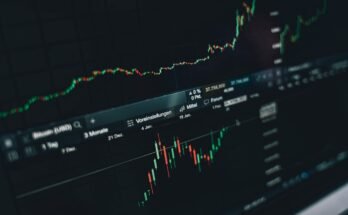Artificial Intelligence and Machine Learning innovate technology, revolutionizing some sectors while leading to the redefinition of possibilities in the modern world. Comfortable with the transition of wiping out what continues to be thought of as the purest human intelligence, it can be said that such Einsteinian inventions open dimensions of growth never imagined in multiple directions. This article, therefore, will try and define the essence of AI and ML, key applications, and potential implications these technologies will have in the future.
Clearly Defining AI and ML
What is Artificial Intelligence?
Artificial Intelligence is the simulation of human intelligence by machines. They are meant to mimic thoughts, learn, and finally make decisions on the way-they then mirror thought processes in faculties like reasoning, solving a problem, and understanding language. Broadly, there are three categories of AI:
Narrow AI is involved in processes like voice recognition or even fraud detection.
General AI is defined as the vast general intelligence a computer can reach or the intel that can do any intellectual task a human can perform.
Super AI is told from an imaginative idea that it could leave behind human intelligence.
What is Machine Learning?
Machine Learning is within a realm of AI that touches on algorithms driven by data. Opposed to the old programming model, in which humans write lines of code telling a machine exactly what to do, ML systems enhance the detail and rolling of their performance through learning experiences. ML can be divided into three types:
Supervised Learning: Algorithms that learn from a sample given the labeled data.
Unsupervised Learning: Algorithms that, with no knowledge, find some patterns in a dataset.
Reinforcement Learning: This builds a model in which a real-world environment predicts and recommends an optimal action course based on the best overarching strategy.
Applications of AI and ML.
Healthcare
AI and ML are restless in the diagnostics, drug discovery, and personalized medicine integration. For example, a predictive model built could effectively analyze patient data such that health risks could be foreseen, while those powered by AI could help discovery through imaging that picks up diseases like cancer with a high rate of accuracy.
Finance sector
In finance, AI and ML carry out the optimization of investment strategies, detect fraud transactions, and enhance customer experience. High-dimension algorithms sample bilks of datasets aimed at disease manifestation predilections into investors.
Transportation
AI and ML-powered autonomous vehicles are redefining how we move from one point to another. This allows such autonomous systems to process data from numerous sensors and cameras to navigate complex environments and align with safer, more efficient transportation network
Retail
From personalized shopping recommendations to demand forecasting, AI and ML are shaping the retail landscape. Virtual assistants and chatbots enhance customer interactions, while predictive analytics build an inventory management system.
Manufacturing
In manufacturing, AI and ML enable predictive maintenance, quality control, and supply chain optimization. Smart factories leverage these technologies to empower them to be more productive while also cutting costs.
The Challenges of AI and ML
In spite of their incredible potential, AI and ML have their associated challenges:
•Data Privacy: The dependence on large data sets creates large concerns regarding how secure the data is and how much privacy is given.
•Bias in Algorithms: If the data to train AI systems is not representative enough, there is a good chance that they will inadvertently reinforce existing biases.
•Ethical concerns: AI is faced with many ethical questions when used for surveillance and autonomous weaponry-building purposes.
•Workforce Displacement: Automation powered by AI and ML may bring about drastic changes in job markets and workflows, leading to the need for re-skilling among workforces.
The Future of AI and ML
As continued development continues, AI, and ML promise a future rich in possibility:
•Deliver breakthroughs in scientific research.
•Enable the creation of smarter cities.
•Improve responses to calamity and mitigation efforts toward climate change.
•Allow for enhanced human creativity together with artists, inventors, etc.
Moreover, the integration of AI and ML with emerging fields such as quantum computing, IoT (Internet of Things), and edge computing will open new propositions for delivering further innovations.
In summary, Artificial Intelligence and machine learning should not simply be seen as technologies; they can change the world for good, mainly because their ability to learn, grow, and solve complex problems can change industries and life. The responsibility to rise to the challenges associated with harnessing this power is equally relevant because the warm embrace of AI and ML can help steer the world towards a greater tomorrow.
Through foresight and ethical considerations of adopting these technologies, we can develop a future where AI and ML work alongside human intelligence to unleash the full potential of the digital century.
Keywords:
Artificial Intelligence, Machine Learning, AI in Healthcare, ML Applications, Future of AI, Ethical AI Development.



